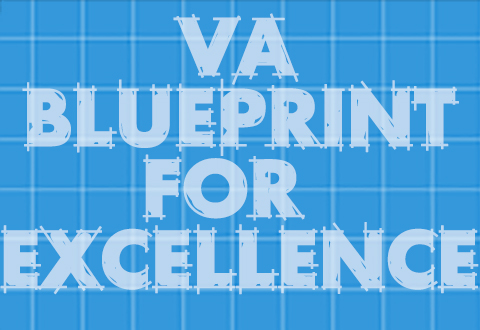VA Blueprint For Excellence

VA Blueprint For Excellence
Based on what we’ve heard—and the lessons I’ve learned about mission-driven corporations, strong institutional values, and good management practices during my 33-years at Procter & Gamble—we’ve wasted no time in developing a healthcare “Blueprint for Excellence.”
This blueprint is critical to achieving part three of our Road to Veterans Day initiative—setting a course for long-term excellence and reform. It is VA’s template to re-establish the Department’s preeminence and leadership in American healthcare. It could not have been produced by better, more knowledgeable people, including VA’s former Under Secretary for Health, Jonathan Perlin, who has completed a short-term assignment at VA—and Interim Under Secretary, Carolyn Clancy, whom most of you know. Their input to this blueprint, and their professional advice on the optimal ways to accomplish this goal, have been invaluable since I became VA Secretary.
The Blueprint lays out four broad themes and supporting strategies for transformation.
First, we must improve the performance of healthcare now. There’s a lot at stake: We deliver 240,000 episodes of care each day—more than 90 million scheduled appointments in 2013 alone. And do 400,000 surgical procedures annually—nearly 1,100 per day.
Second, it’s imperative that we re-set VA’s culture to put a high premium on job performance and the strong VA institutional values that support it—Integrity, Commitment, Advocacy, Respect, and Excellence. These attributes go to the heart of our mission and dictate how employees act, relate to Veterans and each other, and treat the almost 6.5 million patients we see each year. By “living” VA’s core values, we can go a long way toward overcoming the challenges before us.
Third, VA must transition from “sick care” to “healthcare” in the broadest sense. And fourth, we must develop efficient, transparent, accountable, agile business and management processes to support the span of care, services, and programs we deliver. Above all, it’s imperative that VA regain and retain a laser focus on its customer base—that means everyone from the 90-year-old Veteran who crossed Omaha Beach, to the 19-year-old who battled insurgents in Afghanistan’s Korengal “Valley of Death.”
That said, VA’s vision for change is not only Veteran-centric, but Veteran-driven—putting our customers in control of their VA experience. The healthcare industry, itself, is moving toward a more customized, consumer-centric version of primary care access.
We call our patient experience solution, MyVA. It, too, is part of our overarching Road to Veterans Day strategy. It’s called MyVA because that’s how Veterans should view us—as an organization that belongs to them and provides quality care in the ways they need and want to be served.
~Secretary Robert A. McDonald
















